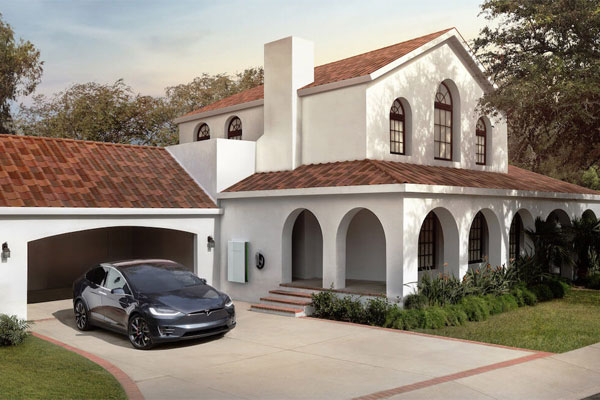Tesla has completed its first ever Solar Roof product installations
Tesla has already completed the first installations of its Solar Roof products, which use integrated solar panels to gather energy. The solar tiles were first introduced last year, and are designed to look essentially indistinguishable from traditional roofing materials so that they present an aesthetically attractive option to consumers who might shy away from traditional panel designs.
The first installations have been made on Tesla employee homes, which mirrors the way it’s distributing the very first Tesla Model 3 automobiles. This is partly a reward for their contribution to the immense effort represented by bringing these things to market, but it’s also likely a strategic decision that allows Tesla to test and monitor its new products early on in their production life.
Solar Boost in One U.S. State Sends Wind to the Sidelines
North Carolina passed a clean-energy bill Thursday that could spur a wave of new solar projects in the country’s second-biggest solar state — but at the expense of wind.
House Bill 589, which Governor Roy Cooper signed Thursday, places a moratorium on new wind development through December 2018. The law creates a competitive bidding process that will bring more than 2.6 gigawatts of new solar over 3 1/2 years, Duke Energy Corp., owner of the state’s biggest utility, said. The legislation also allows customers to lease solar panels on their roofs instead of having to buy them, opening the market to third-party installers.
This U.S. City Now Requires Solar Panels on all New Homes
From mid-September onward, solar panels will be mandatory for new homes in South Miami, Florida. The law — which was passed with a four-to-one majority — states that builders must install 16 m² (175 ft²) of solar panel per 93 m² (1000 ft²) of sunlit roof area, or one panel with a 2.75 kilowatt capacity per 93 m² (1000 ft²) of living space; the rule also extends to some renovations.
The changes are affirmations that South Miami is marching towards a clean energy future, despite the topic causing friction due to the bent of its Republican leadership, complex deals with fossil fuel-based utilities companies, and numerous battles between citizens and energy suppliers concerning whether independent sellers can compete with energy suppliers.
Al Gore Says Climate’s Best Hope Lies in Cities and Solar Power
In the early 2000s Al Gore emerged from a devastating presidential election defeat with a new quest: to warn the world about global warming. Although some may think his climate work peaked with his 2005 film, An Inconvenient Truth, he has taken his mission far beyond the silver screen.
Over the past decade the former vice president has trained thousands of climate leaders who are now spreading awareness about global warming in communities around the planet. He has also worked with government leaders on switching energy economies from fossil fuels to renewables, and has traveled to places such as Greenland and India to witness firsthand the damaging effects of our carbon-addicted world.
Now Gore is back in theaters on August 4 with An Inconvenient Sequel: Truth to Power to convince the public we desperately need to act on climate change—and fast.















Comments